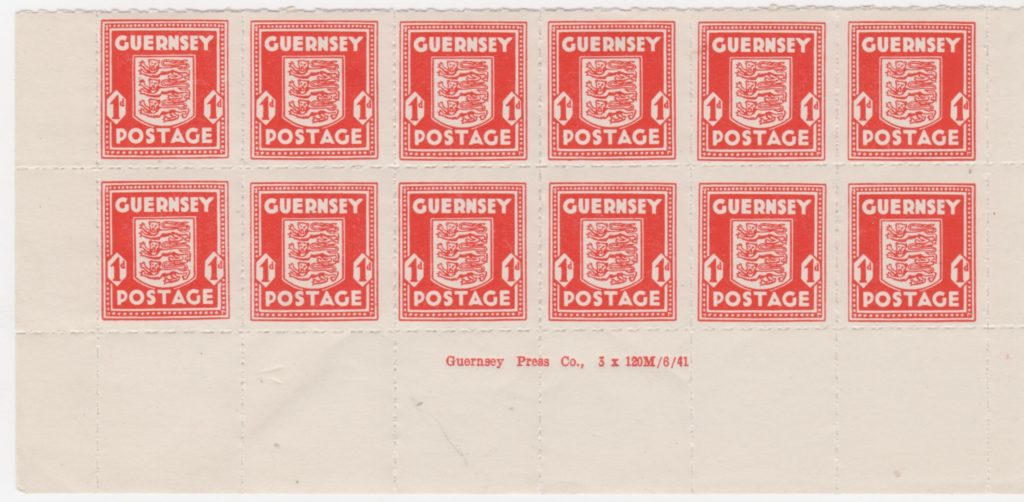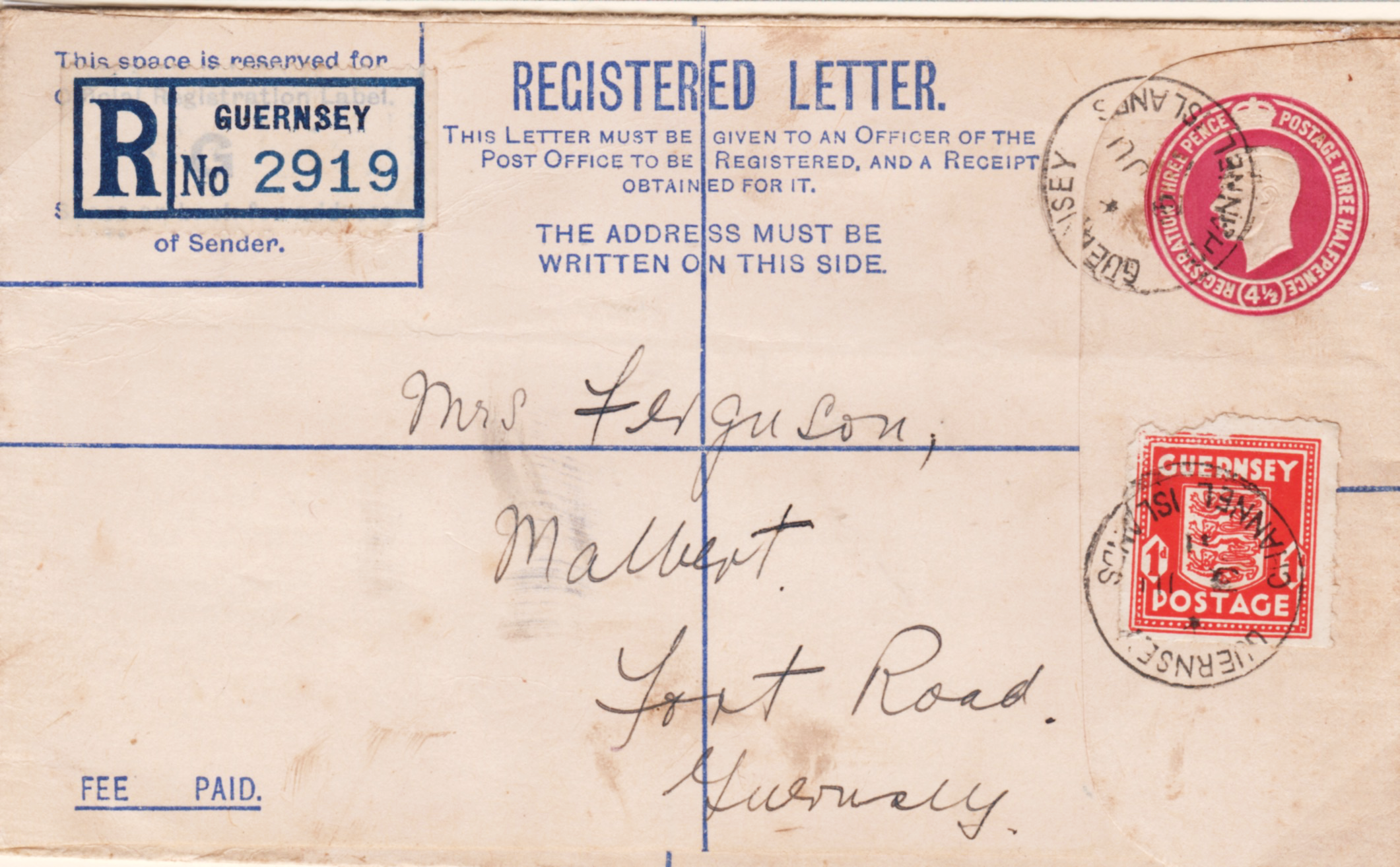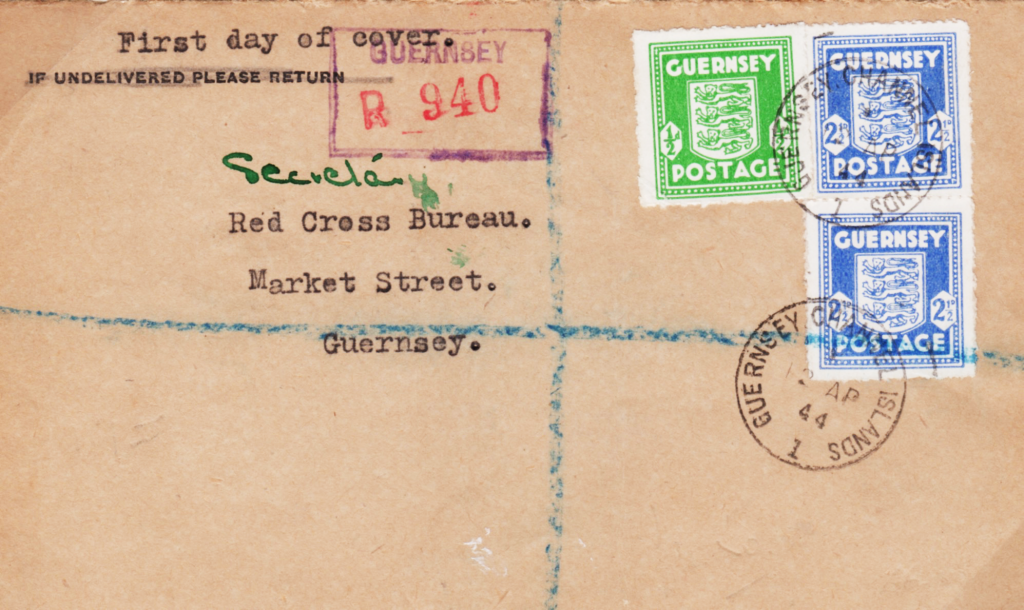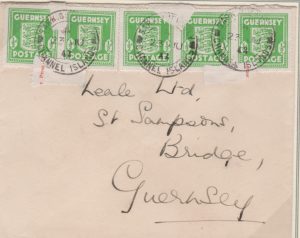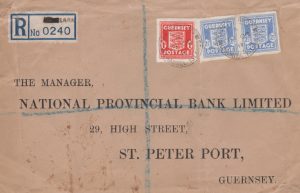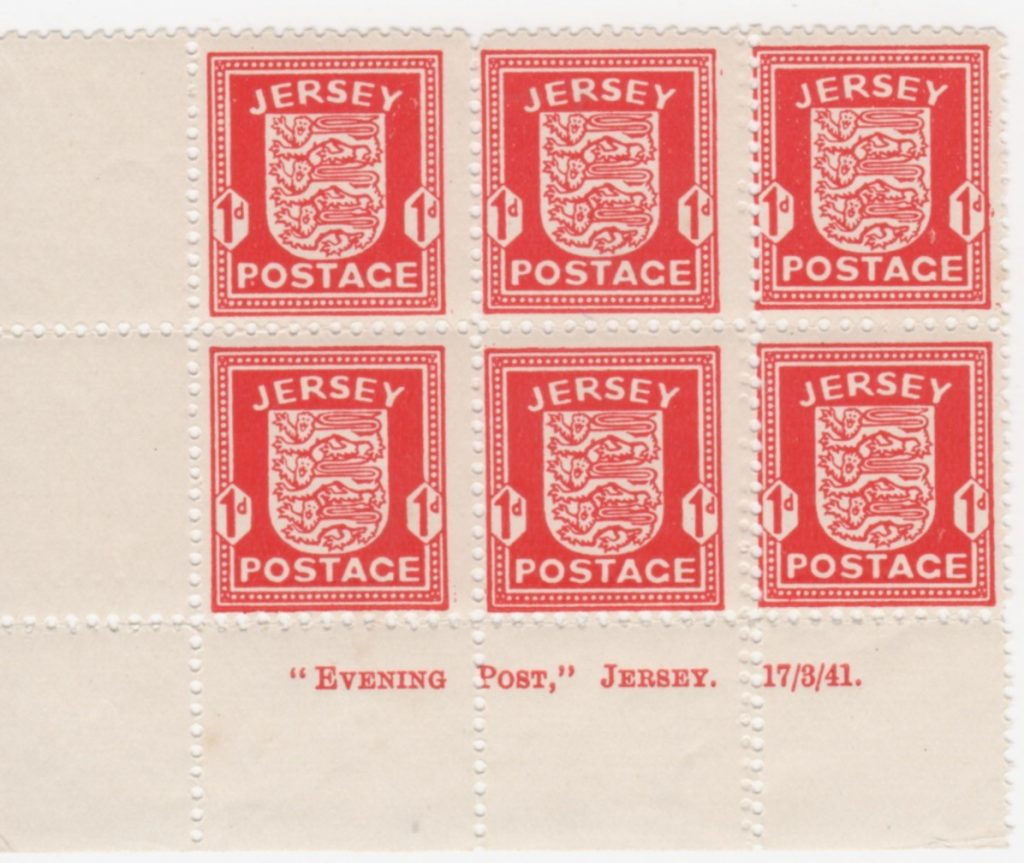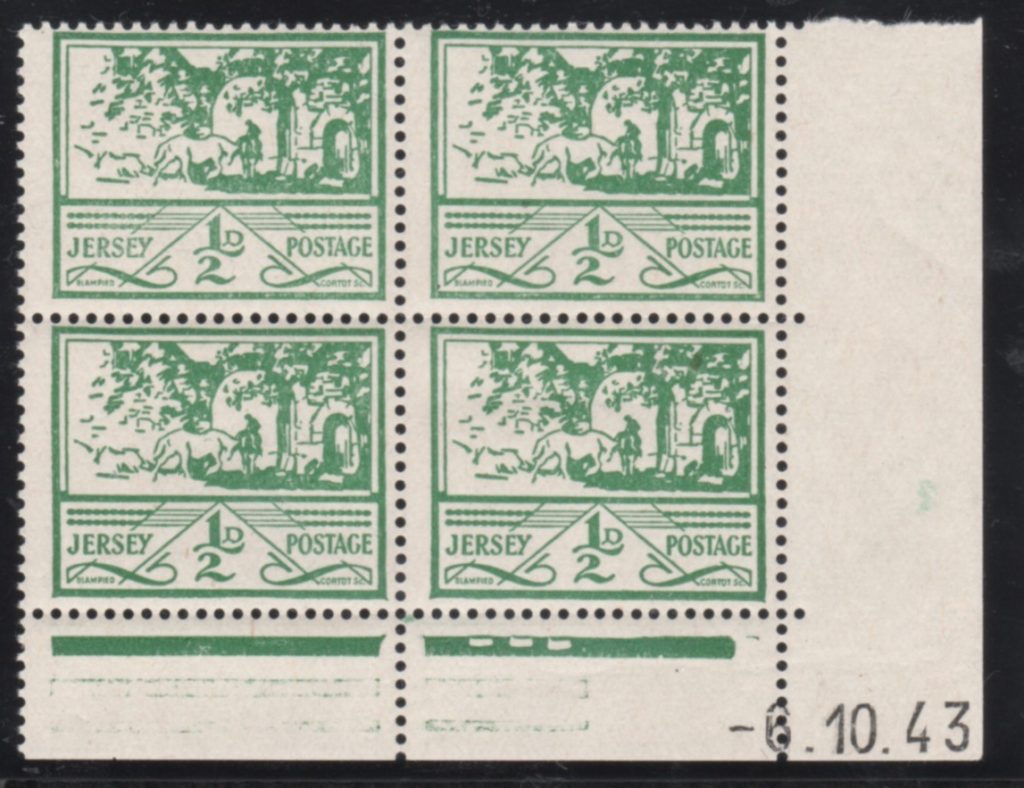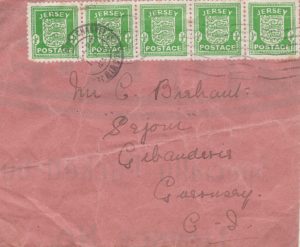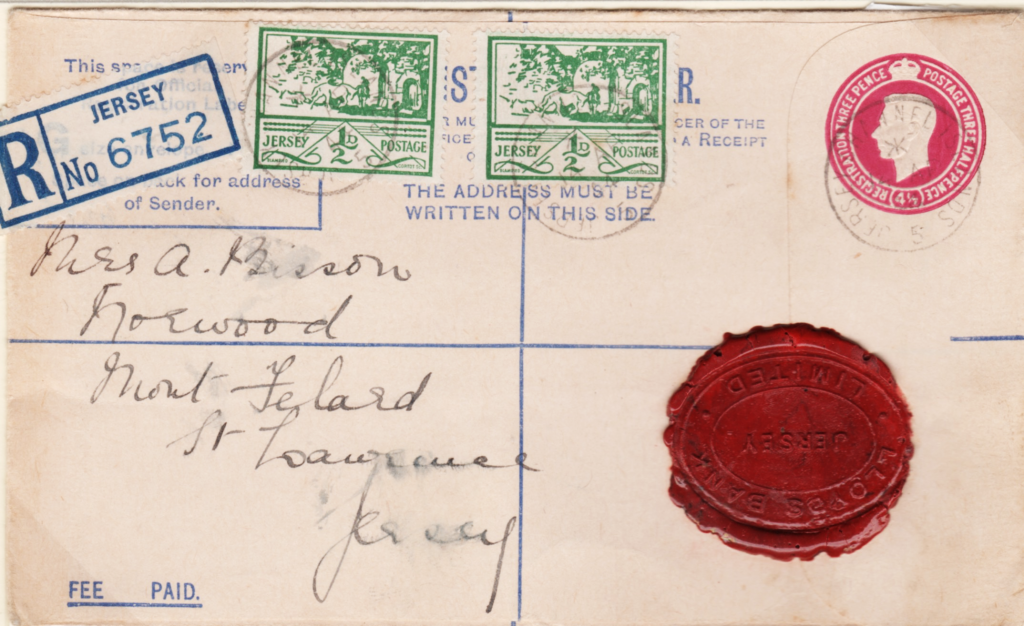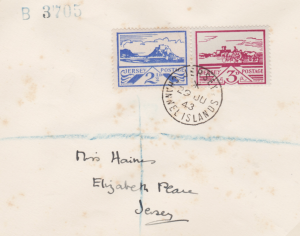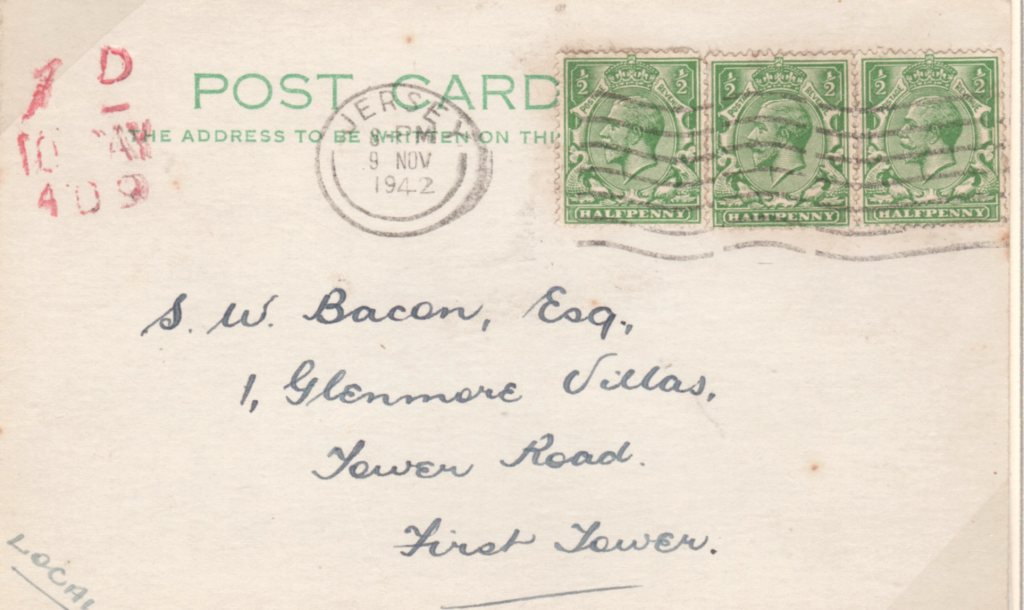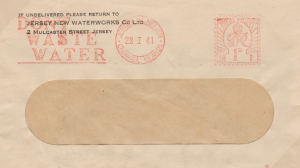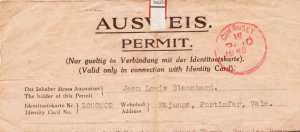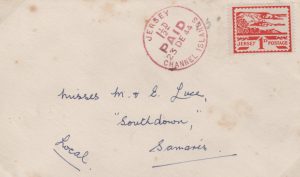Channel Islanders were allowed to send letters within each Island. Mail was also allowed to be sent from Guernsey to Jersey and vice versa. This service could use British stamps. However further supplies of English stamps could not be obtained from London during the Occupation period. The printed matter rate during the Occupation was 1d. By December 1940, stocks of the 1d stamps at Guernsey Post Offices were nearly exhausted, so the Post Office in Guernsey authorized the bi-secting of GB 2d stamps for the 1d rate. This was only allowed between 27 December 1940 and 22 February 1941. No other value could be bisected.
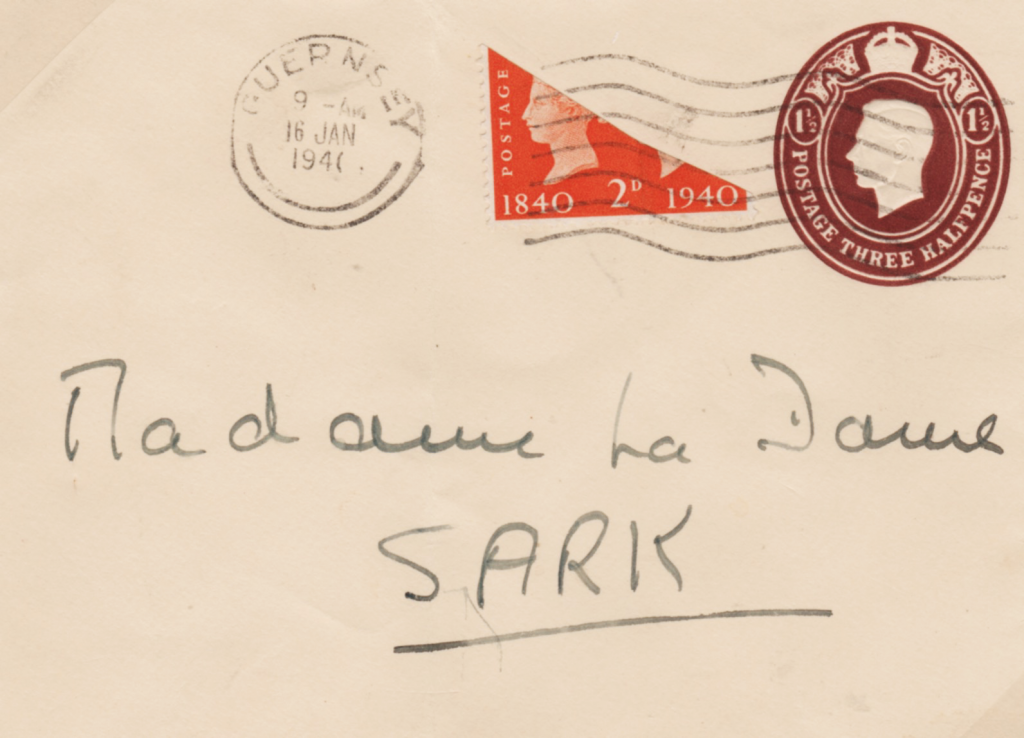
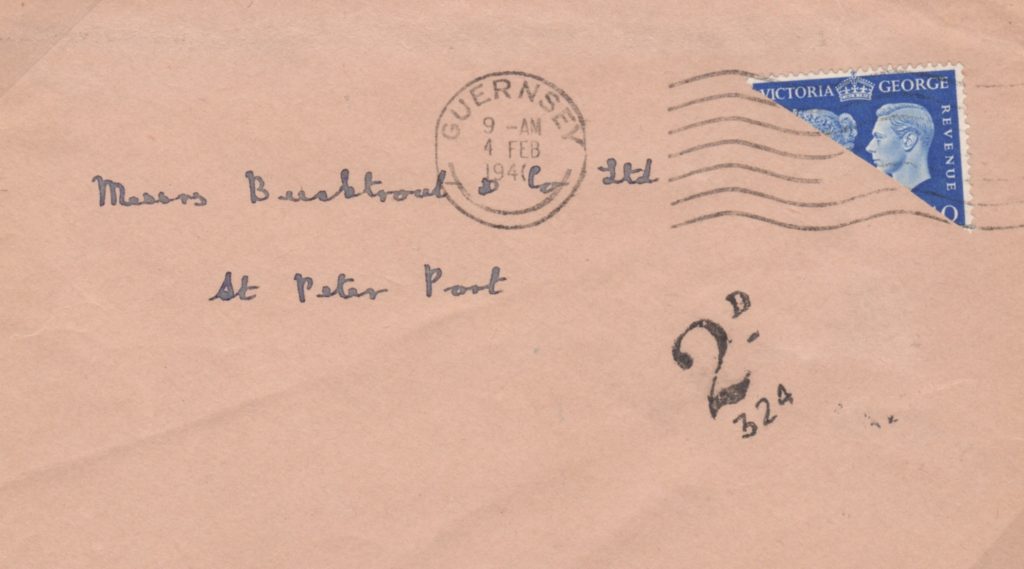
In February 1941, a locally designed 1d stamp was issued in Guernsey. This was designed by E.W. Vaudin and printed by the Guernsey Press Co. Ltd. The imprint can be seen in the lower margin. The stamps were printed in sheets of 60. There were 16 different printings of the 1d stamp. Each printing had a different imprint. There were several different shades. The stamps were rouletted.
The ½d stamp followed in April 1941. This was in an identical design, printed in green. There were 13 different printings resulting in many different shades. A printing of these two values in 1942 was on a special watermarked French banknote paper. Stamps from this printing are easily recognisable because the paper turned blue after the application of the gum. The 2 ½d value again the same design was issued in April 1944 in blue.
There were 4 printings. Examples of these stamps on cover are still easy to find. An interesting collection can be made of these stamps used on local advertising envelopes.
The registration service was in use throughout the Occupation. The registered letter rate was 5 ½d. Registered covers can be found from both the main Post Office and the smaller sub Post Offices. English Registered postal stationery envelopes were valid for postage during this period. This cover was uprated to the new 5 ½d registered letter rate with a Guernsey 1d stamp. Supplies of registration labels were supplied from London prior to the Occupation. However, supplies of these were not obtainable during the Occupation. When stocks of ‘GUERNSEY’ labels ran out at the head post office, labels from closed sub Post Offices were used. Thus, examples of GUERNSEY 4 (ex. Quay Branch Office); GUERNSEY 5 (ex St John’s); GUERNSEY 7 (ex. Vale Road) and GUERNSEY 8(ex. Ville au Roi) can be found on mail from the Head Post Office. On 12 April 1944, a violet registration handstamp was used on mail – just for the one day.
An example of the registration handstamp can be seen on this cover. The registration number was applied separately in red.
Sark is another interesting area to collect during this period. This island is part of the Bailiwick of Guernsey and so Guernsey stamps were used here.
This cover shows 5d x ½d Arms stamps used with Sark datestamps. However, these stamps did not adhere to the envelope. The sender had to use stamp edging paper to stick the stamps on! Registered mail from Sark is hard to find. By May 1944, the Sark Post Office also ran out of registration labels. HERM registration labels were then used (see below).
The word ‘HERM’ was deleted and SARK was inserted in manuscript. This envelope contained a bank passbook and weighed over 2 oz. The postage rate for this heavier letter was 3d. Hence the 6d registered letter rate.
Prior to the Occupation, the Island of Alderney was evacuated because of its close proximity to France. The post Office was closed throughout the Occupation. However, working parties were sent over to Alderney for short periods. Some correspondence is known from these working parties to their families in Guernsey. No stamps were used. Mail received a Guernsey postmark on its arrival in Guernsey.
Stocks of stamps in Jersey were greater than in Guernsey.
The Jersey Arms stamps were designed by Major Rybot and printed by the Evening Post, Jersey. The 1d Arms ~ illustrated here ~ was issued in April 1941 and the ½d value in January 1942. These stamps were perforated. The imprint appears in the lower left-hand corner.
A new set of six stamps showing scenes of Jersey was issued in 1943. These were printed in France. They were designed by Jersey artist, Edmund Blampied. The six values were ½d, 1d, 1½d, 2d, 2½d and 3d. The ½d value is illustrated above. The printing date appears in the lower left corner.
A cover to Guernsey is illustrated showing late usage of the Arms stamps in 1944. Inter-island mail was permitted throughout the Occupation. By 1944 paper was in short supply in the island. To conserve paper stocks, envelopes were often used twice. Some envelopes were hand made, as in this case ~ made from tomato wrapping paper
This postal stationery envelope has been uprated with two Jersey Views ½d stamps to make the correct postage rate. Supplies of JERSEY registration labels were exhausted in 1943. The Jersey Post Office then introduced an unframed handstamp, coded A, B or C followed by up to 4 digits.
Another interesting area to study during the Occupation period is surcharged mail. Two examples are illustrated from Jersey. The first is an underpaid post card from the Manager of the Adelphi Hotel in St Helier. This was posted at the incorrect 1½d rate. The correct postcard rate in 1942 was 2d.
Underpayment was ½d and the surcharge was double this, so the Jersey Post Office applied a 1d/ TO PAY/ 409 surcharge mark in red. Note the absence of postage due stamp. By late 1940 stocks of postage due stamps were exhausted in both Islands.
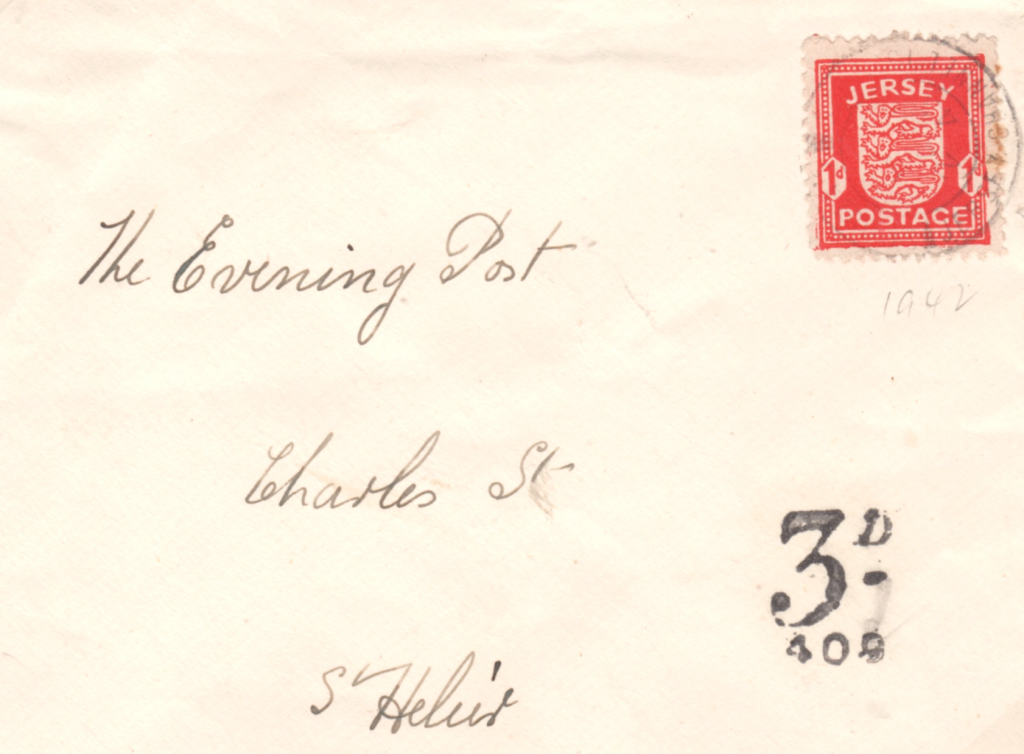
Use of meter mail during the Occupation is another interesting area to collect. Red meter cancel were used by various Companies in both Islands during the Occupation.
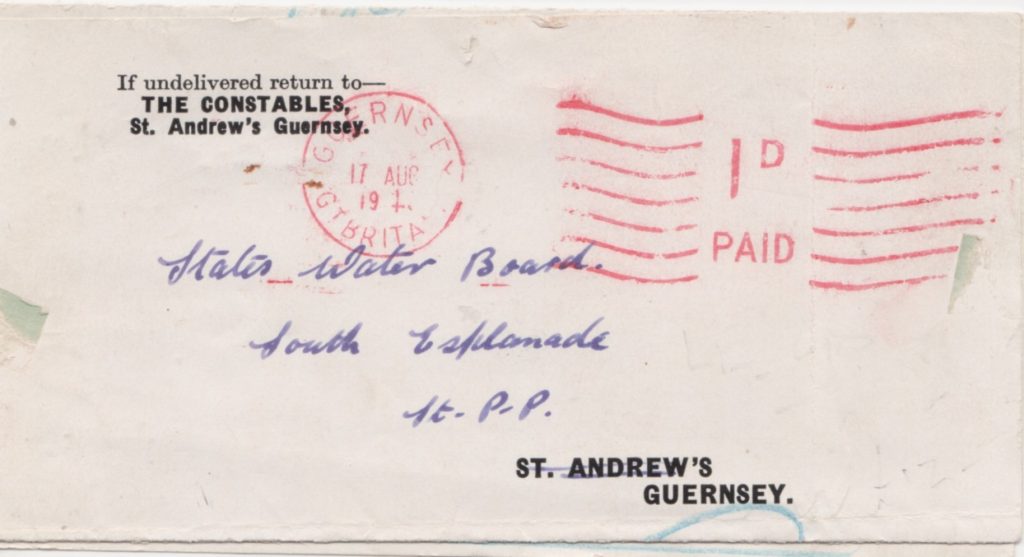
This window envelope was sent by the Jersey NEW WATERWORKS Co. Ltd. at the 1d rate. The ‘DON’T WASTE WATER ‘ slogan cancel includes the royal cypher of KGVI. The code ‘M1’ can be seen in the value die. Slogan cancels of other Companies can be found with different codes in the value die. The most common code is N8, used by the Jersey Head Post Office.
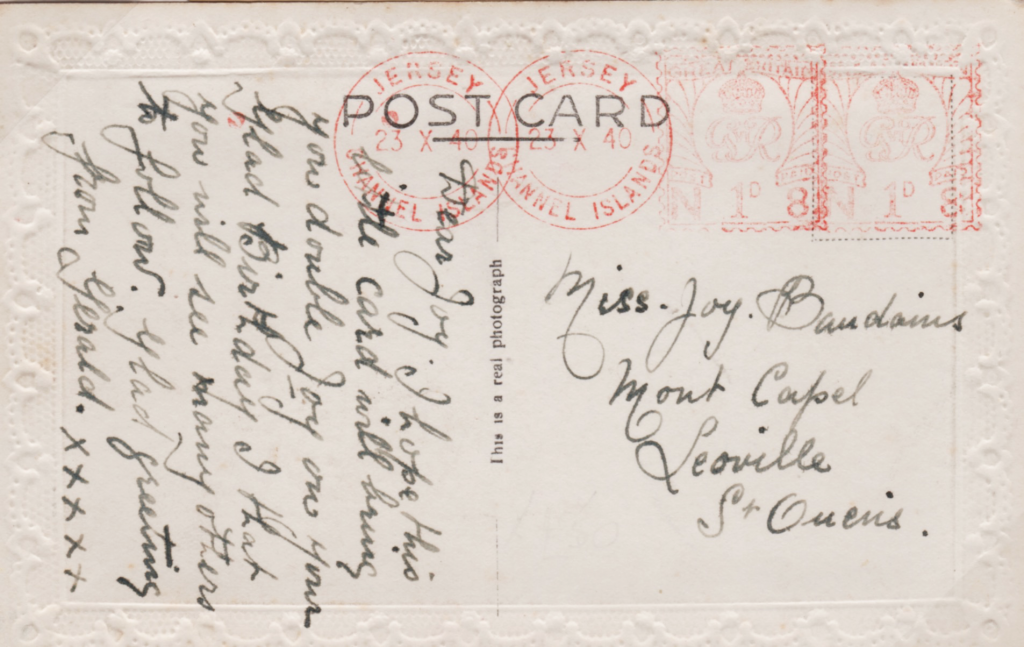
At various times during the Occupation both the Guernsey and Jersey Post Offices ran out of stamps awaiting a new printing. During such periods, both Island head Post Offices used circular PAID handstamps. Examples of these handstamps have been recorded with or without year dates.
This unusual item was posted to an address in the Vale in November 1943. It was a German permit (Ausweis) posted at the 1d rate. No stamp was used. The red circular GUERNSEY 1D PAID handstamp signified that postage had been paid. Examples of 2d PAID and 2 ½d PAID handstamps also exist.
The PAID handstamps for Jersey were similar in design:
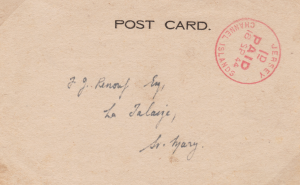
A scarce 1½d PAID handstamp has been recorded used in December 1944. Paris was liberated in September 1944. From this date, no further stamps could be supplied from Paris to Jersey. So by December 1944, stamps were in short supply in Jersey. This cover was posted at the 2 ½d rate. Postage was paid with a combination of a 1d stamp and the Jersey 1½d PAID handstamp. As for Guernsey, 2d and 2 ½d PAID handstamps also exist.

